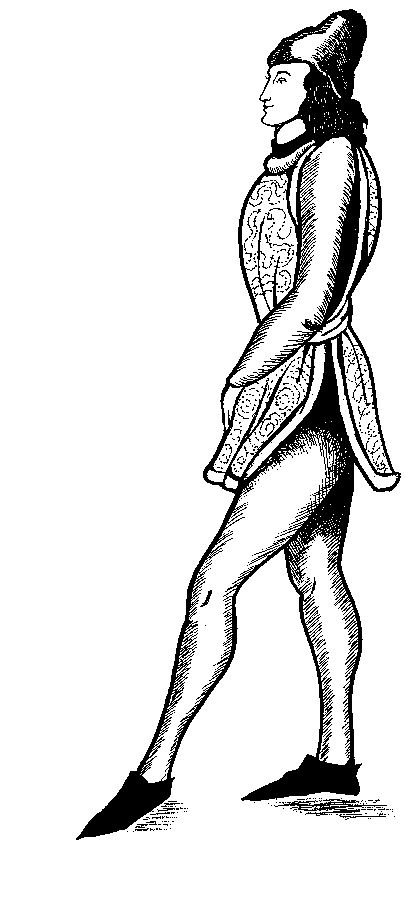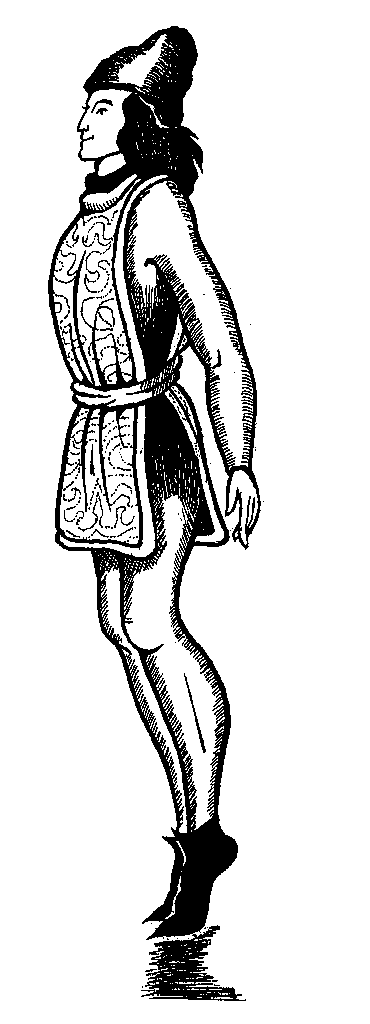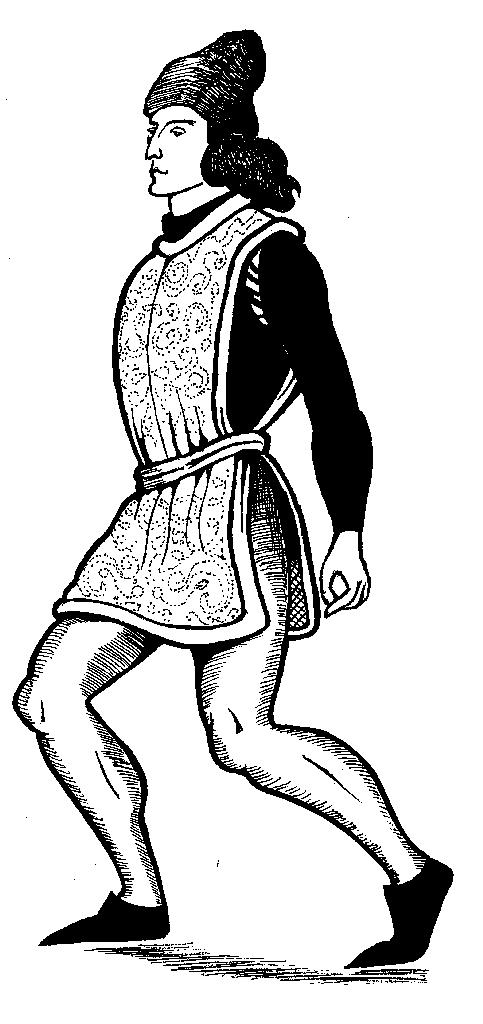|
Contrapasso
|
Contrapassi are
doubles that are done consecutively on the same foot . The first
double is step left-right-left as a normal doppio, and then do a
quick shift of weight onto the right foot.
The next
contrapasso will also begin on the left foot, so two or more
contrapassi in a row will be done left, left, left, not like
sempii or dopii which would be done left, right, left.
The last
contrapasso in a sequence is abbreviated, so that instead of
finishing with a movement back on to the right foot, it simply
omits the final step onto the left. So, two contrapassi in a row
would be done as step left, step right, step left & back, step
left, step right; still finishing with the left foot ready to lead
the next step. Three of them would be done step left, step right,
step left & back, step left, step right, step left & back,
step left, step right.
Contrapassi can
also be done on the right foot, which are the same as described
above but changing “left” for “right” throughout.
Note that two
of these steps are done in 1½ bars of music, and so the
last movement back onto the left foot is done rather quickly, and
the timing of the steps must be arranged carefully to match the
music.
Diana Cruickshank examines this
contrapasso step in detail in an article in Historical Dance,
1992.
|
 The
sempio (single) step is just a single step forwards on the left
foot, as shown in the picture. A sempio right is a single step
forwards on the right foot.
The
sempio (single) step is just a single step forwards on the left
foot, as shown in the picture. A sempio right is a single step
forwards on the right foot. An
Italian double (doppio) was done to a rising and falling movement,
with the dancers rising onto their toes during the steps, and
falling back to the flat of the feet at the end of the beat. This
step takes 1 measure.
An
Italian double (doppio) was done to a rising and falling movement,
with the dancers rising onto their toes during the steps, and
falling back to the flat of the feet at the end of the beat. This
step takes 1 measure. The
riverenza done in bassadanza time is done in a single bar, or six
beats. Here is now to do a riverenza beginning on the left foot,
in six beats:
The
riverenza done in bassadanza time is done in a single bar, or six
beats. Here is now to do a riverenza beginning on the left foot,
in six beats: